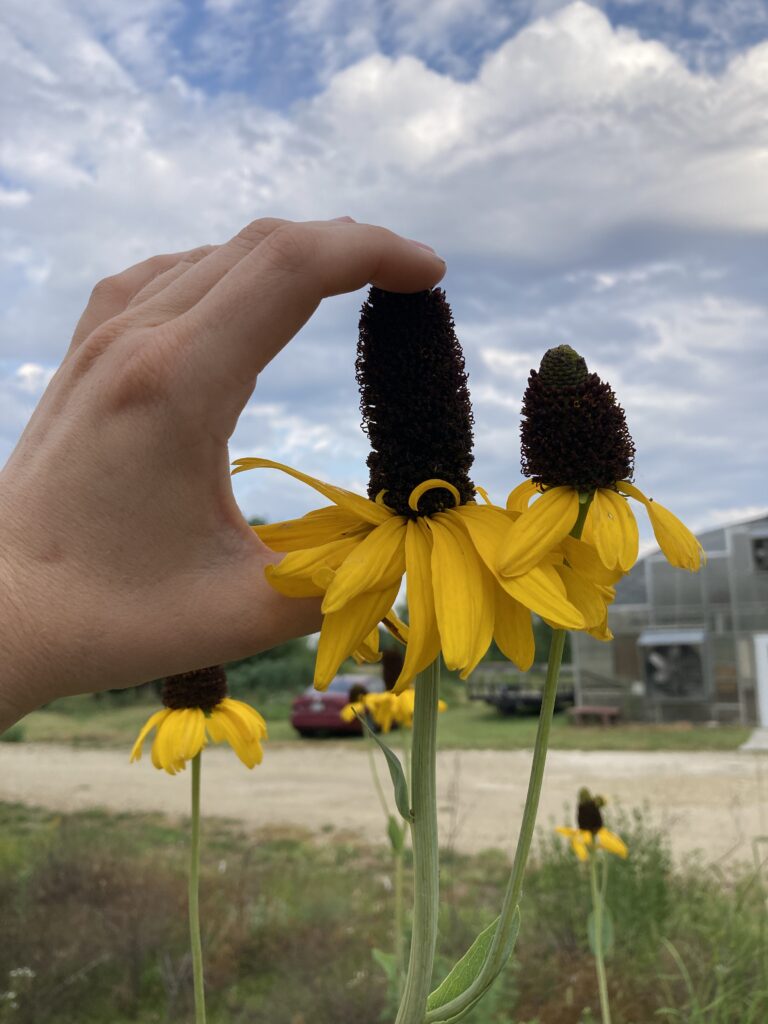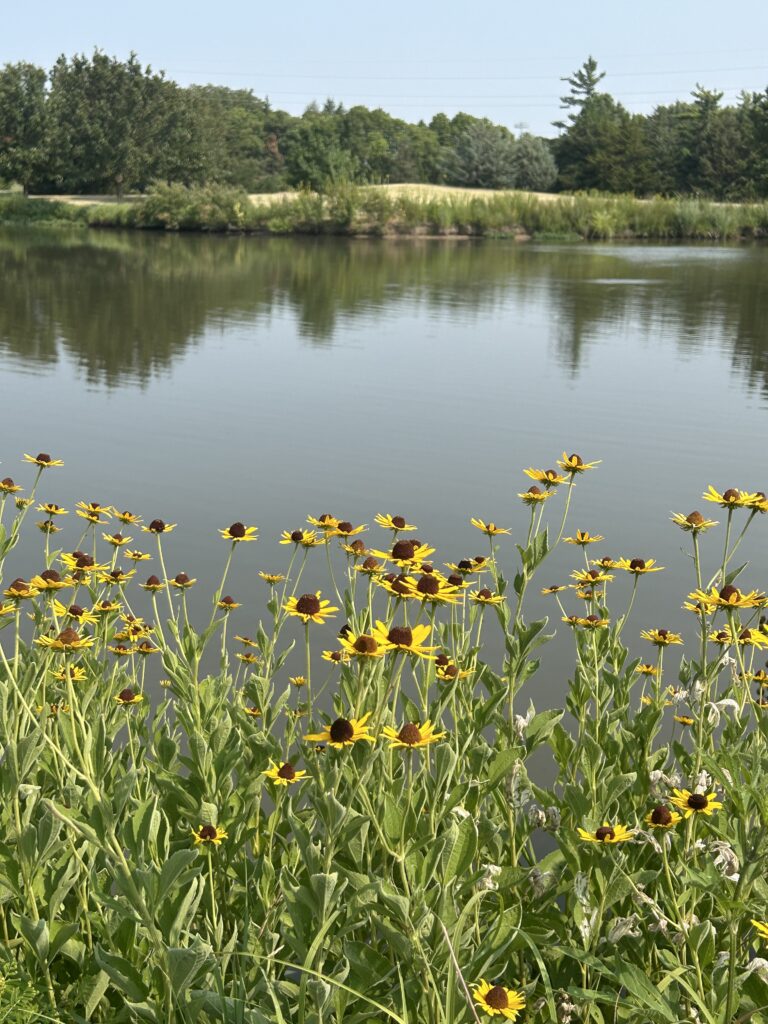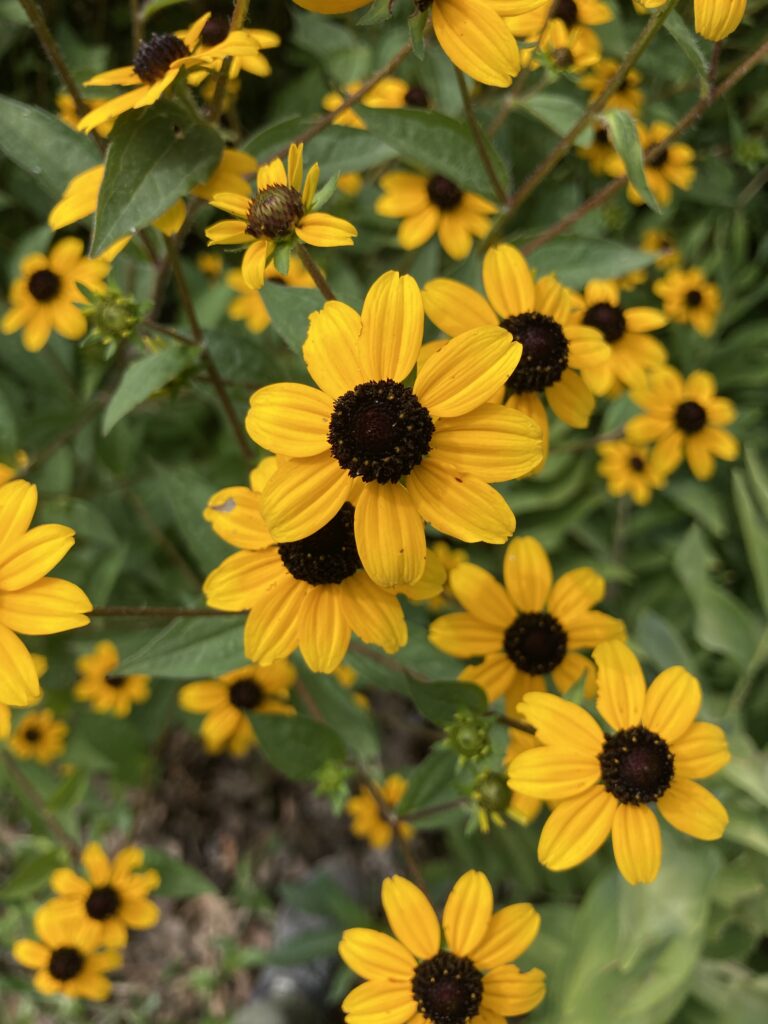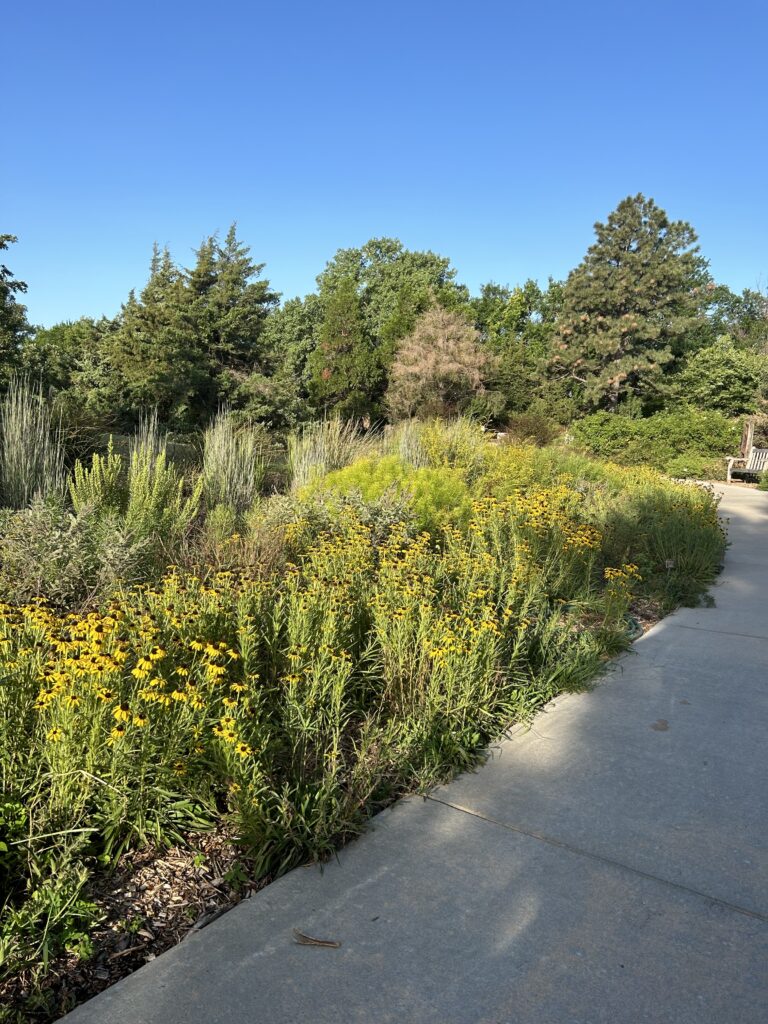Rudbeckia is a very recognizable flower. Its bright yellow blooms appear when summer reaches its peak, and flowers steadily through the hottest part of the summer when we all need it most. Also known as black eyed Susan (named after a romantic poem!) or sometimes as yellow coneflower, Rudbeckia is a variable genus with many garden worthy species. But they each want a little bit different environment, so be sure to put them in the right place!
Rudbeckia maxima – Giant Coneflower

R. maxima is a lesser known species native to the southern US, including Oklahoma and Texas. It averages about 6 feet tall in our area, but can be taller in moist, fertile soils. The flowers attract pollinators all through July, and through the winter a bevy of birds perch on the cones and eat the nutritious seeds. The foliage is striking: waxy and grey, resembling cabbage leaf. A wonderful vertical element to add to your landscape, with very sturdy stems and large blooms. It is a show piece in the garden! But it can easily be floppy if it gets too much shade or the soils are too rich. Situate it in strong sun and semi-dry soil, with dense grasses around it for support.

Rudbeckia subtomentosa – Sweet Coneflower
Sweet coneflower is often found in moist sites, as seen here growing on the banks of the Arboretum pond. This plant can handle a bit of dry soil once established, but in general it likes moist sites. So try to plant it in a low spot or drainage area. The common name references the subtle sweet smell of the blooms. Less spready than other species of Rudbeckia, it pairs well in the garden with grasses like Panicum and other tall forbs like Eryngium yuccifolium. The petals can vary in length, and sometimes they are even rolled or ‘quilled’ as seen in the cultivar ‘Little Henry’.
Rudbeckia triloba – Brown Eyed Susan
Clouds of small yellow blooms on stiff, wiry stems appear in mid to late June on this easy to grow perennial. It readily self seeds, to the point of becoming an absolute menace in the garden! But if you have the space to let it run wild it is a pollinator-attracting powerhouse. It is best planted in an area that can be contained, either by mowing, burning or hemmed in by sidewalk/pavement. This species is native throughout most of the eastern half of the continental United States, and grows well in full to part sun and average to moist soil. The cultivated variety called ‘Prairie Glow’ flowers red with yellow tips. It is a seed strain from breeder David Cavagnaro introduced to the garden trade in 2003. Both the straight species and the cultivar are often available at FloraKansas.
And beyond these three, there are tons more to choose from! In a previous post, Scott talked a bit about R. missouriensis, R. hirta, R. lacinata, and R. fulgida, all great options for the habitat garden. All of these and more are usually available at our biannual FloraKansas event, so be sure to keep your eyes peeled for our updated plant list when it comes out.



